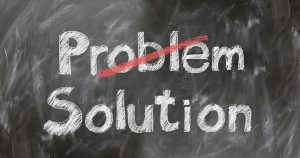Zoom Fatigue why video calls can be exhausting
Zoom Fatigue: why video calls can be exhausting
- Zoom Fatigue: why video calls can be exhausting
- What is “Zoom Fatigue”?
- Why do we get Zoom Fatigue?
- 1. Zoom Fatigue: video conferencing for everything and everyone
- 2. Zoom Fatigue: technically induced distortions
- 3. Zoom Fatigue: psychological reasons
- 4. Zoom Fatigue: Zoom is exhausting because everything is exhausting at the moment.
- How do you fight Zoom Fatigue?

What is “Zoom Fatigue”?
A new term is haunting the media, for the time being mostly in the U.S.: “Zoom Fatigue”. As of April 27, 2020, Google shows 270,000 entries. Until March 15, 2020, the topic did not exist as a search term in Google, since then the U.S. media alone are contributing up to 100 posts per day. Interestingly, as of April 24, 2020, there was no entry in the international database of PubMed’s medical articles in the entire field of biomedicine within the United States’ national medical library.
It therefore appears that the video conferencing service Zoom, which began as a social lifeline since the beginning of the pandemic, then became a subject of privacy and security concerns, now has turned in online as well as offline journalists’ perception into a health problem related headline.
Of course, this is not about the service provider, but about video conferences themselves. Zoom Fatigue describes a feeling of tiredness, fear or worry when receiving another video call. And the proverbial media smoke does not come without “fire” either. In fact, video conferencing tires us in a different way than other forms of screen work or social interaction.
Why do we get Zoom Fatigue?
There are several reasons why video conferencing can be stressful.
1. Zoom Fatigue: video conferencing for everything and everyone
 If we would use video conferencing just for team meetings and one-on-one meetings at work, that would be enough already. But Zoom is now the point of contact for virtual happy hours, family events and religious practice, not to mention online courses for children, doctor’s appointments and maybe a therapy session.
If we would use video conferencing just for team meetings and one-on-one meetings at work, that would be enough already. But Zoom is now the point of contact for virtual happy hours, family events and religious practice, not to mention online courses for children, doctor’s appointments and maybe a therapy session.
If we transfer all of our life’s activities to the same media channel, the contextual reference is lost, that arises, for example, when moving from the office to an after-hour bar.
As a result, we sit, as if chained, in front of a screen with no prospect of being saved.
2. Zoom Fatigue: technically induced distortions
Much of human communication takes place through non-verbal cues, which can either be lost or distorted during a video conference. A number of technical peculiarities do not match our usual experiences with interactions in groups.
There is often a slight audio delay as well as mute button errors and warnings: “Your internet connection is unstable”. 
Prolonged eye contact with an extremely enlarged face brings about innate unconscious mechanisms in humans: the “big face image” – used as standard in the “speaker view” – can trigger unconscious, very old “fight or flight” reactions.
In real encounters there is an unconscious, and above all uninterrupted, choreography of eye movements between two or more conversation partners who accompany the flow of speech. We only look into each other’s eyes temporarily and rarely. We do not stare at faces that stare back at us.
In the gallery view, on the other hand, we are faced with a series of “speaking heads” that do not correspond to our evolutionary perception expectations in group interactions: one speaks, and everyone’s turn comes while everybody else waits for an answer. We do not usually do that. (The forced structure is particularly noticeable during video calls with old friends or virtual family reunions and can lead to disruptions.)
Even more bizarrely, the technically forced mutual staring does not actually allow direct eye contact. In order for the virtual conversation partner to get the impression, that we are looking him in the eye, we have to look into the camera. As a result, the face of the conversation partner gets out of our view axis. Therefore, the virtual faces stare at us without really “looking at” us, and vice versa.
As opposed to real encounters, we also see ourselves frontally and can criticize ourselves in real time, so to speak. We are subject and object at the same time. That uses up energy, especially because we, more or less consciously, monitor how committed we appear.
Therefore, we have to focus on up to 15 faces at the same time, and how we appear in the picture during the conference.
Depending on the conference platform used, video conferences finally provide insights into our home. This can trigger social fears (a problem also for children in online classes).

3. Zoom Fatigue: psychological reasons
Eye contact is much more than just exchanging glances. Looking and being looked at are part of “bodily communication”, a kind of conversation with gestures and facial expressions.
Maurice Merleau-Ponty describes that seeing and touch do yield comparable sensory perceptions. When I touch, I am touched and feel myself. When I see someone, I am – at least in principle – glanced at myself. A look can be very touching, but it can also create distance. Seeing and being seen are both subject to an unconscious tension, a game of approach and distance.
Seeing also changes us, and not just because of what we see and absorb. A person’s gaze pushes us out of the unconscious self-centeredness of our perception: we are no longer the center of our perceived world.
In addition to this, our own identity is created while looking at other and ourselves. Lacan has described the concept of the “mirror stage”, according to which
we as children take up an idea of our own shape from our reflection. For the successful development of this self-image, we have to feel ourselves at the same time and are dependent on the confirmation of our own image: a caregiver must name the perception, e.g. by saying: “this is Amelie”. The identity that arises from this image is not firmly established once and for all. Life experience and a permanent comparison with other people ensure that we lose ourselves again and again, in order to regain ourselves afterwards, and that we are questioned or question ourselves, depending on how we see ourselves and others or how others see themselves and us.
Finally, psychoanalysis also describes the view as a tool of power, taking possession, defense and self-assertion – always in interplay with the entire interaction and depending on context factors.
Given the complexity of the subconscious “view experience”, it is not surprising that the distorted staring in a video conference, which is punched out by the technical filter, tires us. In a way, we are closer in video conferencing, but we still communicate through a strange filter. It becomes exhausting to get to the “real things” through this filter, because we only have thumbnails of faces available for projecting and perceiving identity.
4. Zoom Fatigue: Zoom is exhausting because everything is exhausting at the moment.
We hold video conferences because political decisions turn our lives upside down. This is exhausting in itself.
 Many of us are locked at home with only laptop, notebook and phone screens. Yet, we need to stay connected with our social networks and get involved with our professional tasks. We probably spend more time in front of a screen – and probably in painfully ergonomically wrong chairs – than at any other time in our lives. The bottom grows numb, the back hurts, as do head and eyes: then hours spent in a position on furniture, that was never designed for long-term sitting, painfully spoil our mood. And it doesn’t help either, to have no break, personal conversations with colleagues or an evening commute, in which we were able to decompress and remove our professional roles, in order to slip into our social and relational roles.
Many of us are locked at home with only laptop, notebook and phone screens. Yet, we need to stay connected with our social networks and get involved with our professional tasks. We probably spend more time in front of a screen – and probably in painfully ergonomically wrong chairs – than at any other time in our lives. The bottom grows numb, the back hurts, as do head and eyes: then hours spent in a position on furniture, that was never designed for long-term sitting, painfully spoil our mood. And it doesn’t help either, to have no break, personal conversations with colleagues or an evening commute, in which we were able to decompress and remove our professional roles, in order to slip into our social and relational roles.
In addition to physical exertion, emotional exhaustion occurs: the pandemic can cause excruciating fear. We cannot stop the virus until a vaccine or treatment has been shown to be effective.
These fears can trigger unusual reactions. Perhaps you snap at your partner, when she suggests going out with the dog. Or maybe you will grow impatient with your child. It is important to pay attention to our emotions, as well as the way we express them. Our interactions with others must be determined by attention to their own emotions and kindness.
A basic cause of collective fatigue is the painful awareness, that life will not be the same as before. Every video call reminds us, that we cannot see someone, we would like to see in person. It represents a reminder of a world that has been irrevocably destroyed, a symbol of tragic deaths and increasingly destroyed hopes and dreams.

How do you fight Zoom Fatigue?
We can neither influence the technical basics nor the complexity of perception and communication. Nevertheless, there are some simple tricks to avoid zoom fatigue.
- First of all: not every video call actually has to be a video call. Think about how to use zoom calls. You probably do not need video chat for all of your work.
- Create a separate spatial area where you can take business video calls and personal video calls. This creates the contextual reference mentioned above: the “home office” should feel different from the “living area”, even if it is the same room. This prevents the feeling of working around the clock and creates a boundary between work and leisure.
- If you find it uncomfortable, how you look in front of the camera, adjust your settings and try different lights.
- If possible, take breaks between calls. Get some fresh air, a glass of water, or a few jumping jacks or a quick 10-minute brisk walk – outdoors or on the spot. In general, exercise and nutrition are important.
- Use your phone and focus on listening and taking notes with paper and pen. Manual notes improve attention and learning effects, not just in the classroom. If you focus on what’s happening and jot down decipherable notes along the way, you can stay focused and will better retain what is said.
- For some meetings it is sufficient if only the speaker activates his video. (However, everyone should attend the whole time with video function on, at least for one team meeting per week, in order to have a shared feeling of being together.)
- If you, as the leader of a meeting, find that a participant shows little reaction or always turns off their video, speak to him or her. A large video conference can be intimidating, whether it’s professional or personal, and some people do not like to speak in large groups.

Although no one is sure, how long we are encouraged to do our work remotely or to keep our distance from people outside of our own home, or whether masks are becoming ubiquitous like water bottles and smartphones, we know that we need to take care of our physical and mental health.
Sources:
Scott Rosenberg: Why we’re getting zoom fatigue. AXIOS
https://eu.usatoday.com/story/news/nation/2020/04/23/zoom-fatigue-video-calls-coronavirus-can-make-us-tired-anxious/3010478001/ (04/27/2020)
Ryan W. Miller: What’s ‘Zoom fatigue’? Here’s why video calls can be so exhausting. USA TODAY
https://eu.usatoday.com/story/news/nation/2020/04/23/zoom-fatigue-video-calls-coronavirus-can-make-us-tired-anxious/3010478001/ (04/27/2020)






